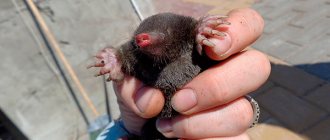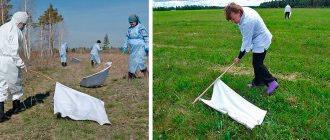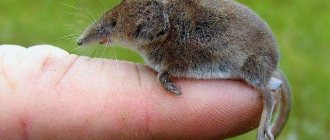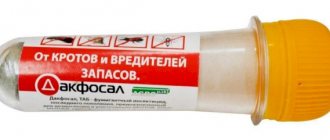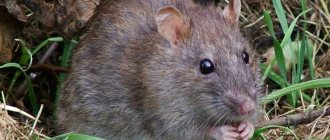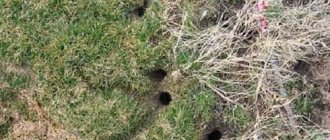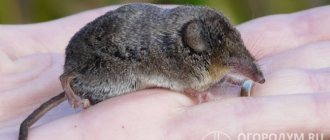- Prevention
The need to get rid of shrews - the smallest and most charming insectivorous predators - is assessed by gardeners and gardeners in two ways. On the one hand, these mammals destroy insect pests and do not eat either cultivated or lawn plants, but on the other hand, they damage their roots, digging up the ground in search of food, and if they dig up the entire garden, they can cause serious damage to the crop.
The shrew (pictured) holds the title of the smallest mammal on the planet
Before getting rid of shrews in your summer cottage, you should take into account that under certain conditions these animals do more good than harm. Therefore, when choosing the most effective method of counteraction, you need to understand the nature of their life activity.
What does a shrew look like? Photo and appearance
The shrew family (Soricidae) includes many species (more than 350), united by common external characteristics and way of life. All of them are united into three subfamilies: shrews (Crocidurinae), shrews (Soricinae) and mouse shrews (Myosoricinae).
Shrews are often confused with mice. The main difference is the elongated muzzle, reminiscent of a movable proboscis. It should be noted that this animal is not a rodent, that is, it has nothing to do with mice. Shrews are distinguished by their extremely small sizes. Representatives of this family are the smallest mammals in the world.
All shrews are distinguished by the presence of the following external features:
- thick short fur;
- very small eyes;
- short limbs with 5 fingers;
- large head.
The color is most often gray or brown. The length of the tail can vary significantly. You can also notice that shrews have greatly enlarged front incisors (this especially applies to the lower teeth).
The animal is not picky about its living conditions, so it is distributed almost all over the world, with the exception of Australia, New Zealand, New Guinea and South America south of Ecuador, Colombia and Venezuela.
The likelihood of this pest appearing on the site increases in the presence of fallen trees and stumps, as well as burrows left by other animals. In rare cases, shrews can take up residence in human buildings.
What does a shrew eat? Lifestyle
Because shrews have a huge metabolic rate, they hunt around the clock. The basis of their diet is insects and earthworms. The favorite treats for shrews are the larvae of mole crickets and chafers. In addition, the animal can eat:
- baby small rodents;
- slugs and snails;
- frogs;
- arachnids;
- lizards
Most species are more active at night. Shrews can occupy the burrows of other animals (most often moles or mice) or dig them themselves. They use fallen leaves and grass for nests. Representatives of the shrew family never live in groups. Each individual has its own territory, the size of which is several tens of square meters.
When searching for prey, the shrew relies on touch and smell. During the day, this animal eats an amount of food that exceeds its own weight by 1.5-2 times. Due to this metabolic rate, small species of shrews die without food in just 7-9 hours. The animal's sleep is short-term and intermittent. It should also be noted that shrews do not hibernate. However, under unfavorable conditions, short-term torpor was observed, accompanied by a decrease in body temperature. Some species are prone to cannibalism.
Species that live near water and lead a semi-aquatic lifestyle are distinguished separately. Also, some shrews, such as the common shrew, short-tailed shrew and water shrew, are among the few venomous mammals. It is necessary to pay attention to the fact that such species do not harm gardens and vegetable gardens.
Features of reproduction
Reproduction occurs 1-2 times a year. In some species up to 3 times a year. Pregnancy lasts from 13 to 28 days. The replacement of baby teeth in cubs occurs during embryonic development. One litter can have from 4 to 14 cubs. A newborn shrew is not covered with hair, and also does not have a developed proboscis. The cubs are completely blind.
The female is responsible for caring for and protecting the offspring. The cubs feed on milk for about 3 weeks. In shrews, mother and offspring move in a chain, holding each other's tails. Shrews are distinguished by the presence of a rare ability, in which in the fall the body size decreases and the skull flattens. With the onset of warmth, the size of the animal, its skull and brain volume increase. The lifespan of a shrew can vary depending on the species and habitat conditions. Most shrews live 1.5 years, extremely rarely - 3 years.
Natural enemies
The main threat to these animals is people and pets. The natural enemies of the shrew are represented mainly by birds of prey. Most often they are hunted:
- owls;
- caresses;
- corvids;
- ferrets.
Shrews are distinguished by the presence of a strong musky odor that repels most predators. It has been noted that cats and dogs most often kill shrews, confusing them with mice. However, they do not eat caught prey. In nature, predators also often refuse such food, hunting shrews only in the absence of other prey.
Traps
A good trap for shrews is a mousetrap, in which you need to put some kind of pleasant-smelling bait.
You can make such a device with your own hands from a pipe or wire:
- Wire trap . The spacer is installed near the entrances to the tunnels; at the slightest touch, the fixation mechanism will work. An animal caught in a trap can be thrown out, and then the trap can be set again. You can charge the spacer until there is not a single shrew left in the garden.
- A trap made of a small-diameter pipe , on both edges of which it is necessary to construct shutters. When the shrew smells the fragrant bait and pokes its head into the gate, the gate will open slightly. Nothing will prevent the pest from getting inside, but it will no longer be able to get out (the shutters must be closed inward).
Traps equipped with sharp rods are not as humane as previous examples of traps. When the mechanism is triggered, these rods kill the pest by piercing its body with these spokes.
Common types of shrews
Many species of the shrew family are characterized by low numbers. Among the shrews that can cause damage to a garden or vegetable garden, the common shrew and the pygmy shrew are distinguished. These representatives are common and quite often settle near people.
Wood shrew or common shrew (Sorex araneus)
Wood shrew or common shrew (Sorex araneus)
is the most common species of the shrew family. This species is especially common in Northern Europe. The forest shrew is of medium size: the maximum body length is 82 mm. The weight of this animal does not exceed 16 g. Also, the common shrew has the following distinctive features:
- The color is uniform, dark brown. Shade saturation may vary slightly. Some individuals have coat color close to black. The lower part of the body is light brown or off-white. The color transition is smooth;
- With age, the color of the wood shrew darkens. Juveniles are light brown in color. Also, their fur is usually less dense than that of older shrews;
- tail approximately equal to body length. The minimum tail length is 60 mm, and the maximum is 75 mm. It has a bright brown color. The tail may be bare or covered with short, sparse hairs;
- The pinna is partially or completely hidden by fur, making it difficult to notice.
One litter contains from 5 to 7 cubs. The common shrew prefers to live in tall grass or bushes. In addition, representatives of this species often settle in heather heaths and forest undergrowth. The wood shrew is most often found in human buildings.
Etruscan shrew or pygmy shrew (Suncus etruscus)
Etruscan shrew or pygmy shrew (Suncus etruscus)
It is considered the smallest mammal. It is found in Southern Europe, North Africa, Central Asia, Japan, Southern China, etc. The weight of the pygmy shrew is only 1-1.5 g. The body length of the animal ranges from 3 to 4.5 cm. The tail length does not exceed 3, 5 cm. The Etruscan shrew has a large head and an elongated body. In addition to size, the pygmy shrew has several more distinctive features:
- large ears not hidden by fur;
- rather small hind limbs when compared with other species of shrews;
- color variability.
Like the wood shrew, the pygmy shrew is distinguished by its brown color, which gradually becomes lighter closer to the belly. However, the color of the coat of this species is more varied: there are individuals of rich brown, dirty gray and even reddish colors. The tail is covered with sparse long hairs.
There are only 2-6 cubs in one litter. Their weight does not exceed 0.2 g. Etruscan shrew cubs reach sexual maturity at 4 weeks. The lifespan of the pygmy shrew can reach up to 3 years, but most often does not exceed 2 years.
Representatives of this species prefer to settle in places with high humidity. Natural shelters are any cracks and cracks. Most often the animal can be found near reservoirs and in the foothills. The shrew often settles in the voids of stumps, fallen trees, and under dead wood. Sometimes the pygmy shrew settles near people.
Reviews from gardeners
Konstantin, 64 years old, Rostov
The simplest methods helped to scare away shrews from a summer cottage: acoustic and “aromatic”. Before the autumn digging of the garden, dried marigolds crushed into dust were scattered, and rags soaked in turpentine were buried along the entire border of the plot. Pieces of rotten fish were placed in the holes. In case the shrews bypassed the bait, additional metal reinforcement was dug into the garden bed at a slight angle to the ground, to a depth of 40-50 cm. A plastic bottle was placed on it, which moved with a light blow of wind, and the noise from the vibration of the steel rod scared away the animals. Champagne bottles, also at an angle, were buried in the ground - the effect was the same - an unbearable roar was heard.
Veronica, 56 years old, Ryazan region
In the garden plot we did not decide to use poison or traps for humane reasons, so we save ourselves from shrews using the Grad ultrasonic device. I insert batteries into the device, seal it in a plastic bag and dig it near the holes to a depth of 10 cm. After 2-3 weeks I observe the complete disappearance of the pest. At the same time, ultrasonic waves do not have a harmful effect on animals and people.
Semyon, 48 years old, Krasnodar region
In my apiary in mid-November, a shrew got into the habit of emptying the hives. It is more dangerous than ordinary mice because it is small and very voracious. To drive it away, I placed a fine-mesh (size 6 mm) grate between the bottom and the lower body, but the tight holes prevented the bees from exiting. In March I replaced it with a mesh with 8-10 mm cells. In addition, I cleaned the hives of dirt and placed a pollen collector on the entrance. After that, all the problems with pests disappeared.
Shrews on the site: harm and benefit
Whether it is worth fighting the shrew and considering it a pest is an extremely controversial issue. This animal brings both harm and benefit to gardens and vegetable gardens. The harm from the presence of a shrew on a site is that when digging holes, it damages the root system of plants. The animal is capable of chewing through tree roots. In addition, due to shrews, heaps appear on the site, which makes it impossible to create a beautiful lawn.
Representatives of the shrew family can carry some diseases, so it is unacceptable to try to touch or handle them. Animals are also often parasitized by ixodid ticks. Field mice, which are clearly pests, sometimes live in tunnels dug by shrews.
It is important to understand that the shrew is a voracious predator. Thanks to this, a shrew on the site can quickly destroy all garden pests. The presence of this animal on the site minimizes the risk of insects such as mole crickets, Colorado potato beetles and leaf beetles. The shrew effectively loosens the soil, helping to saturate the earth with oxygen.
An argument in favor of shrews on the site can be considered that it protects the territory from pests that can destroy all plantings and leave the summer resident without a harvest. Moreover, the animal works all year round, it is able to get rid of pests in hard-to-reach places: thicker than leaf litter, deep in burrows, under stones, snow and dead wood. At the same time, the animal itself does not harm the area at all or causes any harm if its population is large. Do not forget that shrews live alone.
Video
Experienced gardeners share educational information about the life activity of shrews and ways to repel these insectivores in the following videos:
His main specialty is an accountant, so even at his dacha he strives for accuracy and achieving ideal order in everything. Preference is given to growing grapes. I am sure that the deeper you delve into gardening and gardening, the more you understand that there is no limit to perfection!
Found a mistake? Select the text with the mouse and click:
You need to collect medicinal flowers and inflorescences at the very beginning of the flowering period, when the content of nutrients in them is highest. Flowers are supposed to be picked by hand, tearing off the rough stalks. Dry the collected flowers and herbs, scattered in a thin layer, in a cool room at natural temperature without access to direct sunlight.
Compost is rotted organic remains of various origins. How to do it? They put everything in a heap, hole or large box: kitchen scraps, tops of garden crops, weeds cut before flowering, thin twigs. All this is layered with phosphate rock, sometimes straw, earth or peat. (Some summer residents add special composting accelerators.) Cover with film. During the process of overheating, the pile is periodically turned or pierced to bring in fresh air. Typically, compost “ripens” for 2 years, but with modern additives it can be ready in one summer season.
From varietal tomatoes you can get “your own” seeds for sowing next year (if you really like the variety). But it is useless to do this with hybrids: you will get seeds, but they will carry the hereditary material not of the plant from which they were taken, but of its numerous “ancestors”.
The homeland of pepper is America, but the main breeding work on developing sweet varieties was carried out, in particular, by Ferenc Horvath (Hungary) in the 20s. XX century in Europe, mainly in the Balkans. Pepper came to Russia from Bulgaria, which is why it received its usual name - “Bulgarian”.
In little Denmark, any piece of land is a very expensive pleasure. Therefore, local gardeners have adapted to growing fresh vegetables in buckets, large bags, and foam boxes filled with a special earthen mixture. Such agrotechnical methods make it possible to obtain a harvest even at home.
In Australia, scientists have begun experiments in cloning several varieties of grapes grown in cold regions. Climate warming, which is predicted for the next 50 years, will lead to their disappearance. Australian varieties have excellent characteristics for winemaking and are not susceptible to diseases common in Europe and America.
“Frost-resistant” varieties of garden strawberries (more often simply “strawberries”) need shelter just as much as ordinary varieties (especially in those regions where there are snowless winters or frosts alternating with thaws). All strawberries have superficial roots. This means that without shelter they freeze to death. Sellers’ assurances that strawberries are “frost-resistant,” “winter-hardy,” “tolerates frosts down to −35 ℃,” etc. are deception. Gardeners must remember that no one has yet managed to change the root system of strawberries.
Natural toxins are found in many plants; Those grown in gardens and vegetable gardens are no exception. Thus, the seeds of apples, apricots, and peaches contain hydrocyanic acid, and the tops and peels of unripe nightshades (potatoes, eggplants, tomatoes) contain solanine. But do not be afraid: their number is too small.
Humus is rotted manure or bird droppings. It is prepared like this: the manure is piled up in a heap or pile, layered with sawdust, peat and garden soil. The pile is covered with film to stabilize temperature and humidity (this is necessary to increase the activity of microorganisms). The fertilizer “ripens” within 2-5 years, depending on external conditions and the composition of the feedstock. The output is a loose, homogeneous mass with a pleasant smell of fresh earth.
https://www.syl.ru/article/150907/new_zemleroyka-kak-s-ney-borotsya-metodyi-borbyi-narodnyie-sredstva
https://master-dez.ru/deratizatsiya/gryzuny/zemleroyka/
https://ogorodum.ru/kak-izbavitsja-ot-zemleroek-na-uchastke-samyj-jeffektivnyj-sposob.html
Signs of a shrew appearing in a summer cottage
Hills of earth, small holes, as well as sudden wilting of plants for no reason indicate the presence of a shrew on the site. But similar signs are also characteristic of other underground inhabitants, such as moles and field mice. The best way to make sure that it is a shrew that has settled on the site is to see it. Otherwise, it will not be possible to distinguish this pest from a mole. You will have to look for the shrew in the evening or at night, because during the day it is less active and rarely comes to the surface. Shrews in the garden most often settle in cracks, under rotten stumps and various debris.
It should be taken into account that the shrew does not eat plant foods. Therefore, corroded roots and root crops indicate the presence of other pests. You also need to pay attention to the fact that shrews prefer to settle in conditions of high humidity.
Advantages of cooperation with the sanitary and epidemiological station
Independent methods of pest control do not bring success; they have a temporary effect. Only a professional approach to treating areas allows you to forget about pests for a long period.
The advantages of cooperation with SES include the following factors:
- Professionals in the fight against rodents use certified products of hazard class 4 (safe), which are produced by European companies BAYER and BASF. This is a guarantee of reliability. The effect occurs after one treatment.
- The specialists who work for us have specialized medical education, which ensures the safety of using pesticides. Their combined experience is 68 years.
- The conclusion of an agreement guarantees legal protection and high-quality performance of the work. You will no longer see pests on your site.
- We work around the clock on all days of the week. SES specialists are already ready to come to you.
- After exterminating shrews, we must carry out disinfection. Its implementation guarantees the prevention of infections.
- We use modern professional equipment, which is not commercially available, and which allows us to effectively cope with deratization and disinfection.
Come. Call. We will definitely help you.
Additional Information:
- Extermination of rats
- Destruction of mice
- Destruction of moles
How to get rid of a shrew? Ways to fight
There are many methods to get rid of shrews in the garden. Some of them do not pose an immediate threat to the animal, while others are radical methods of control.
Repellent
This method is the most humane, which is why it is highly popular. It is also often used for preventive purposes. This is especially useful in cases where shrews have previously settled on the site. Repelling has several benefits:
- absolutely safe for the animal;
- is easy to use;
- does not require significant financial costs.
But this method has a short-term effect, i.e. the shrew often returns to its old place of residence, which is why the procedure has to be repeated. In addition, this method has rather low efficiency.
Various smells and sounds can scare away shrews. Often the animal is scared away with the help of fish (usually the head or entrails are used). You can also soak the cloth in birch tar, gasoline or kerosene. From plants, the shrew is repelled by odors:
- peppermint;
- all legumes;
- wormwood;
- milkweed;
- imperial hazel grouse.
Cloth, fish or fresh leaves of the plants listed above should be placed inside the hole. In this case, the entrance will need to be either covered with earth or plugged with moss. In addition, plants can repel pests if they are planted around the perimeter of the site. But this option is more likely to be a preventive measure.
There are also mechanical and ultrasonic repellers. The first ones are made independently. At the heart of such a repeller is an iron rod stuck as deep into the ground as possible. You need to place a plastic bottle, glass or tin can on it. When exposed to wind, the structure produces loud sounds, which, when the rod is buried in the soil, create vibrations underground that scare away the shrew. Instead of a rod, you can use a wooden stick. This method is quite simple, but keep in mind that noise can irritate not only animals, but also people.
Ultrasonic repellers, in turn, can be easily purchased. They have the following advantages:
- large range of action;
- sound waves emitted by such repellers are not perceived by humans;
- pleasant appearance, often with decorative elements.
You need to understand that ultrasonic repellers require large financial costs. You should also give preference only to trusted manufacturers, since such devices often do not have the desired effect. The most effective models for combating shrews are:
- Weitech WK-0675;
- Ecotec;
- Sititek "Thunder-plus";
- Antikrot Dadzhet;
- Ecosniper;
- "Tornado OZV.03".
It is important to consider that shrews can get used to mechanical and ultrasonic repellers. Therefore, it is recommended to alternate the former with repelling with strong odors, and periodically change their location. When choosing an ultrasonic device, you should pay attention to models that change the vibration frequency.
Chemicals against shrews
This method is the most effective, but the least humane. It is necessary to understand that chemicals can harm not only shrews, but also other animals (cats, dogs), plants, and people with hypersensitivity. You should also use this method with caution if you have children. The cost of such funds can vary significantly. Effective chemicals include:
- Gas tablets. Such products emit gas that is harmful to shrews. They also have a repellent effect. The effectiveness of gas tablets varies, but on average it is slightly lower than that of asphyxiants. “STOP-Mole” is considered one of the most effective. It is also recommended to pay attention to biological agents such as “Detia”. They are not dangerous to beneficial insects, plants, people and pets. However, such tablets only repel shrews and have low effectiveness.
- Asphyxiating drugs. They have the highest speed of action. But this method definitely cannot be called humane. The most effective drugs against shrews are Hunter Antirodent, ARGUS gel, Nutcracker, Green House and Russian Trap. The drug “Rat Death” is also extremely effective, but its use is not recommended, this is justified by the fact that such a drug causes not only suffocation, but also internal bleeding, leading to the painful death of the animal.
Most chemicals are easy to use and affordable. When choosing a drug, it is important to consider the hazard class and follow all safety rules. Such means can lead to the death of not only shrews, but also children, cats, and dogs.
Traps
This method is quite popular and effective. The cost of traps and the profitability of purchasing them can vary significantly depending on the model chosen and the number of shrews. It should be borne in mind that initially traps meant traps, as well as snares, which led to the death of the animal. However, now increasingly preference is given to traps that do not harm shrews. That is, the animal gets stuck in a trap, so it will need to be released at a distance from its area. Both options are considered to be equally effective, but of course a trap that does not kill the animal is preferable. Traps that do not harm shrews include:
- Pipe. Can be purchased or made independently. This trap is a plastic or metal pipe with doors on both sides. These doors only open inward. The pipe is the most popular type of trap. This is due to the ease of installation, which is combined with high efficiency. At the same time, you can save a lot on the trap by making it manually from ordinary plastic bottles. It is not necessary to place bait in the pipe, but this can increase its effectiveness. The most common bait used is earthworms.
- Pit. This trap allows you to catch several shrews at a time. Making it with your own hands is easier than making a pipe. A plastic bottle or bucket is suitable for this. But it is important to consider that the depth of the trap must be at least 40 cm. In addition, if the walls of the tunnel are severely damaged, the shrew may refuse to use this move.
It is important to understand that this method also has some disadvantages. Traps are less effective than chemicals and do not have a preventative effect. In addition, all shrews caught, regardless of the trap used, must be removed by hand. Also, all excavated passages must be covered with some opaque material.
When catching live shrews, it is important to remember that these animals quickly die without food. You need to handle them only with thick gloves. It is necessary to release the animal as far as possible from the site (preferably at a distance of 1-1.5 km). In this case, the best place will be thick grass where the shrew can hide. Traps should be checked every 3-4 hours. Checking too frequently can scare away the animal, while checking too infrequently can lead to its death.
Traditional methods against shrews
Such methods are distinguished by the greatest accessibility. The most common folk method is to fill all the minks with water. This method ensures that you get rid of not only shrews, but also other pests that may be in their tunnels.
It is believed that shrews cannot tolerate the smell of marigolds. The petals of these flowers should be placed in holes. Rags soaked in mothballs can scare away the shrew. You can also drive away the animal with the smell of burnt rubber. However, it is important to consider that this method can be dangerous for both shrews and people, so it must be used with caution.
Preventive measures
The best way to prevent shrews from entering a site is a mechanical barrier. It is also an excellent element of prevention against moles, mole crickets, field mice and other underground pests. Despite this, the mechanical barrier has several serious disadvantages: high financial costs and difficulty in manufacturing. Most often, fine mesh mesh is used as a barrier. It must be dug in to a depth of about 1.2 m. In this case, 15 cm of mesh should be left on top.
Shrews on the site prefer to live in conditions of high humidity, so it is better to refuse to water the plantings daily.
For preventive purposes, it is recommended to periodically carry out deep digging. This allows you to get rid of all the old holes and repel pests. Deep digging is best combined with regular digging in early spring and autumn.
Also, the risk of shrews appearing in the garden is noticeably reduced in the presence of repellent odors, so it is recommended to plant plants around the perimeter of the site that the animal does not like. It is believed that the most effective are marigolds, peas, garlic, wormwood and peppermint.
Shrews in a summer cottage usually do more good than harm. It feeds on pests, the presence of which definitely harms the garden. A large population of shrews can damage plantings, but if there are few animals, then there is no need to fight them.
Pest control using strong odors
Using a smoke bomb or other similar devices, smoke is released as deep as possible into the burrows of the animals. Those who have used this method claim that they leave the site for a long time.
A less effective, but still good way is to use repellent natural odors. Repellent plants have such aromas - for example, marigolds, narcissus, legumes, garlic or milkweed. Growing them near burrows will help repel furry pests for a while before you find a more effective remedy.


